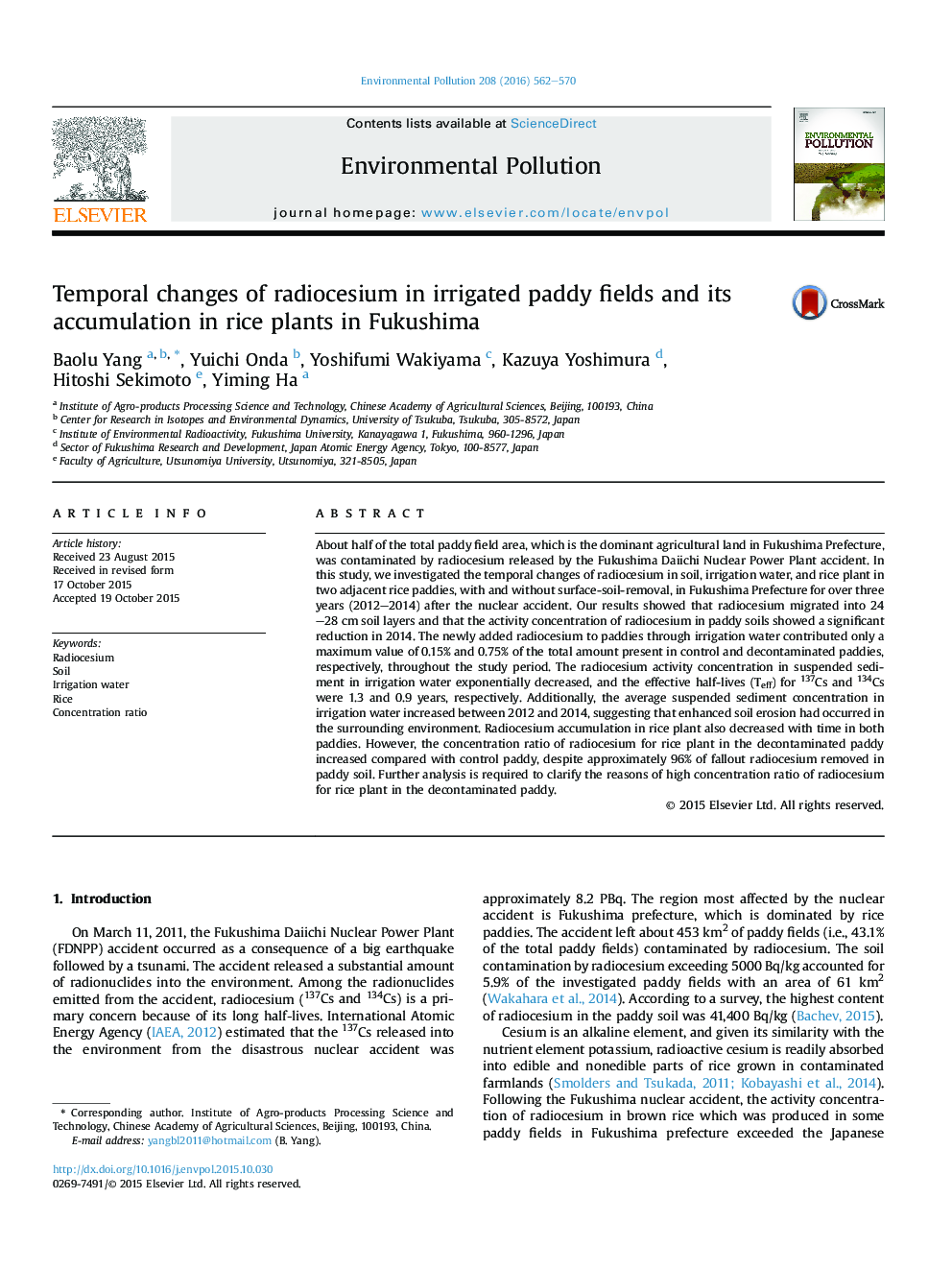| Article ID | Journal | Published Year | Pages | File Type |
|---|---|---|---|---|
| 6316294 | Environmental Pollution | 2016 | 9 Pages |
Abstract
About half of the total paddy field area, which is the dominant agricultural land in Fukushima Prefecture, was contaminated by radiocesium released by the Fukushima Daiichi Nuclear Power Plant accident. In this study, we investigated the temporal changes of radiocesium in soil, irrigation water, and rice plant in two adjacent rice paddies, with and without surface-soil-removal, in Fukushima Prefecture for over three years (2012-2014) after the nuclear accident. Our results showed that radiocesium migrated into 24-28Â cm soil layers and that the activity concentration of radiocesium in paddy soils showed a significant reduction in 2014. The newly added radiocesium to paddies through irrigation water contributed only a maximum value of 0.15% and 0.75% of the total amount present in control and decontaminated paddies, respectively, throughout the study period. The radiocesium activity concentration in suspended sediment in irrigation water exponentially decreased, and the effective half-lives (Teff) for 137Cs and 134Cs were 1.3 and 0.9 years, respectively. Additionally, the average suspended sediment concentration in irrigation water increased between 2012 and 2014, suggesting that enhanced soil erosion had occurred in the surrounding environment. Radiocesium accumulation in rice plant also decreased with time in both paddies. However, the concentration ratio of radiocesium for rice plant in the decontaminated paddy increased compared with control paddy, despite approximately 96% of fallout radiocesium removed in paddy soil. Further analysis is required to clarify the reasons of high concentration ratio of radiocesium for rice plant in the decontaminated paddy.
Related Topics
Life Sciences
Environmental Science
Environmental Chemistry
Authors
Baolu Yang, Yuichi Onda, Yoshifumi Wakiyama, Kazuya Yoshimura, Hitoshi Sekimoto, Yiming Ha,
